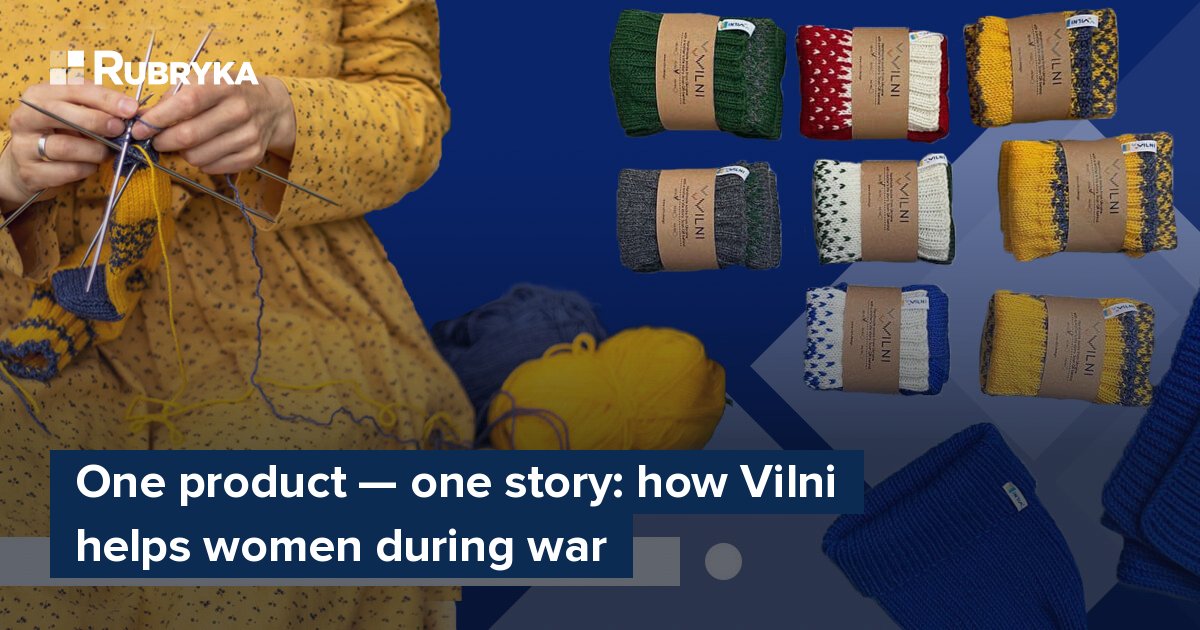
When the state cannot cope, activists come to the rescue. This is how the Vilni volunteer project was born—the initiative provides work to women left with nothing because of russia's war. Rubryka talked to its founders and found out how the endeavor works.
What is the problem?
4.8 million lost jobs
Since the beginning of the full-scale war in Ukraine, about 4.8 million Ukrainians have lost their jobs. This is stated in the report of the International Labor Organization (ILO) for May 2022.
The organization stated that the Ukrainian economy was seriously affected. 5.2 million refugees left for neighboring countries. 2.75 million of these Ukrainians are people of working age, of whom 1.2 million previously worked but lost their jobs or resigned.
Anastasia Bytko, the co-founder of the Vilni initiative, was among them. At that time, the woman lived in Kyiv and had a six-month-old daughter. Together with her family, she evacuated to Uzhhorod in Ukraine's west. But besides their home, the whole family had to say goodbye to jobs as well. Savings were running out, so they had to find a solution.
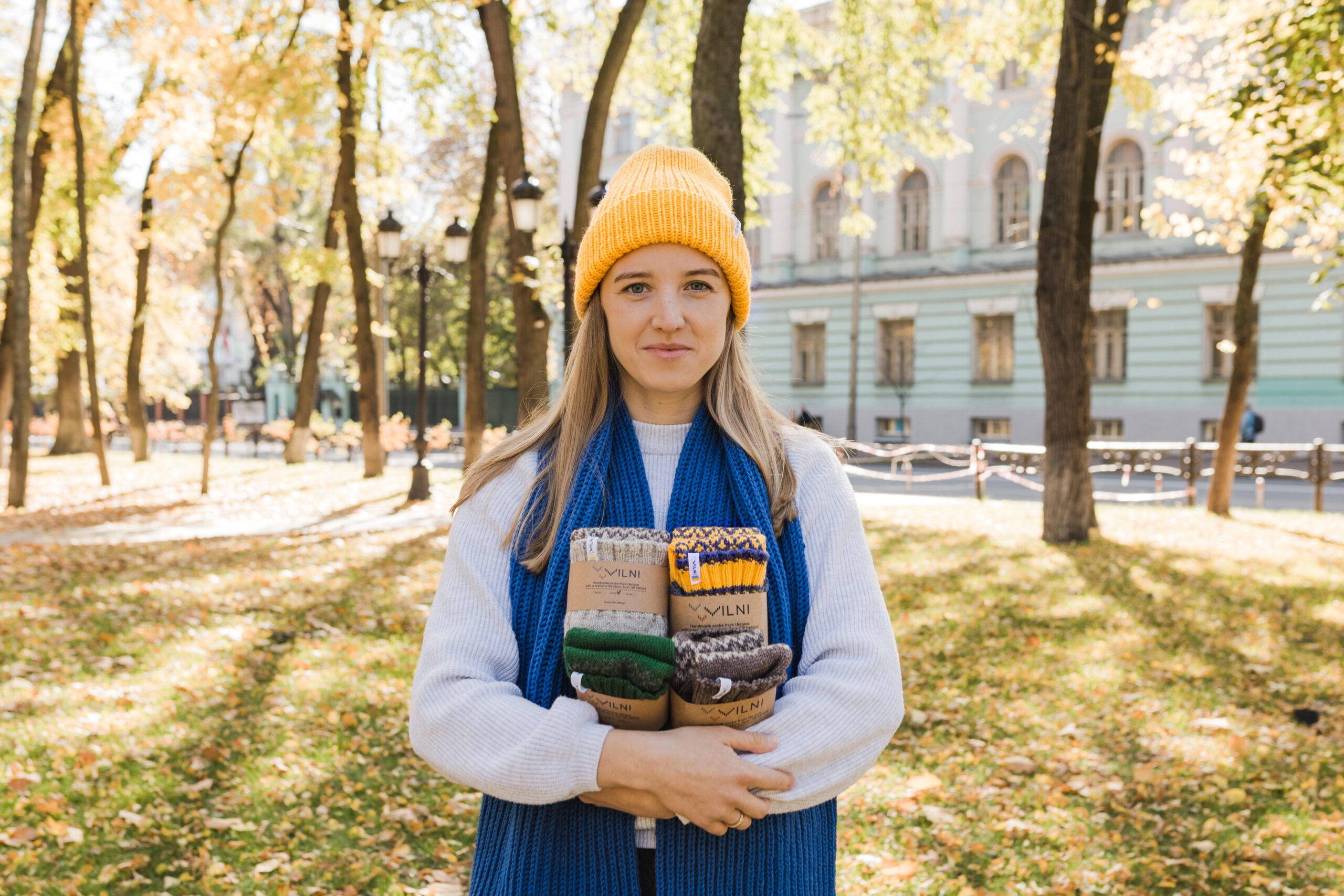
What is the solution?
Create jobs
Before the full-scale war, Anastasia was engaged in the export of services. In one of the business education projects in Ukraine, the woman worked with her Estonian colleague Andy Paterson. She called him when she lost her job. Together they launched the Vilni initiative. But before that, both of them looked at the damage caused by the war.
On February 24, Estonia's Independence Day, Andy and his friends left Tallinn for Lviv. They hoped to be able to take friends and family to go to Estonia together. They also wanted to take Anastasia and her family to a safe place.
At the border, it became clear to Andy that the situation was difficult and that a vast number of people needed help. Together with their friends for the first three days, they worked with Polish volunteers who organized emergency assistance at the border. There they set up a point with things where caring people brought strollers, children's clothes, formulas, and other children's things.
Later, in cooperation with public organizations, they organized a move to Estonia. Their team expanded to 20 volunteers in a few weeks, transporting approximately 500 refugees to Estonia daily.
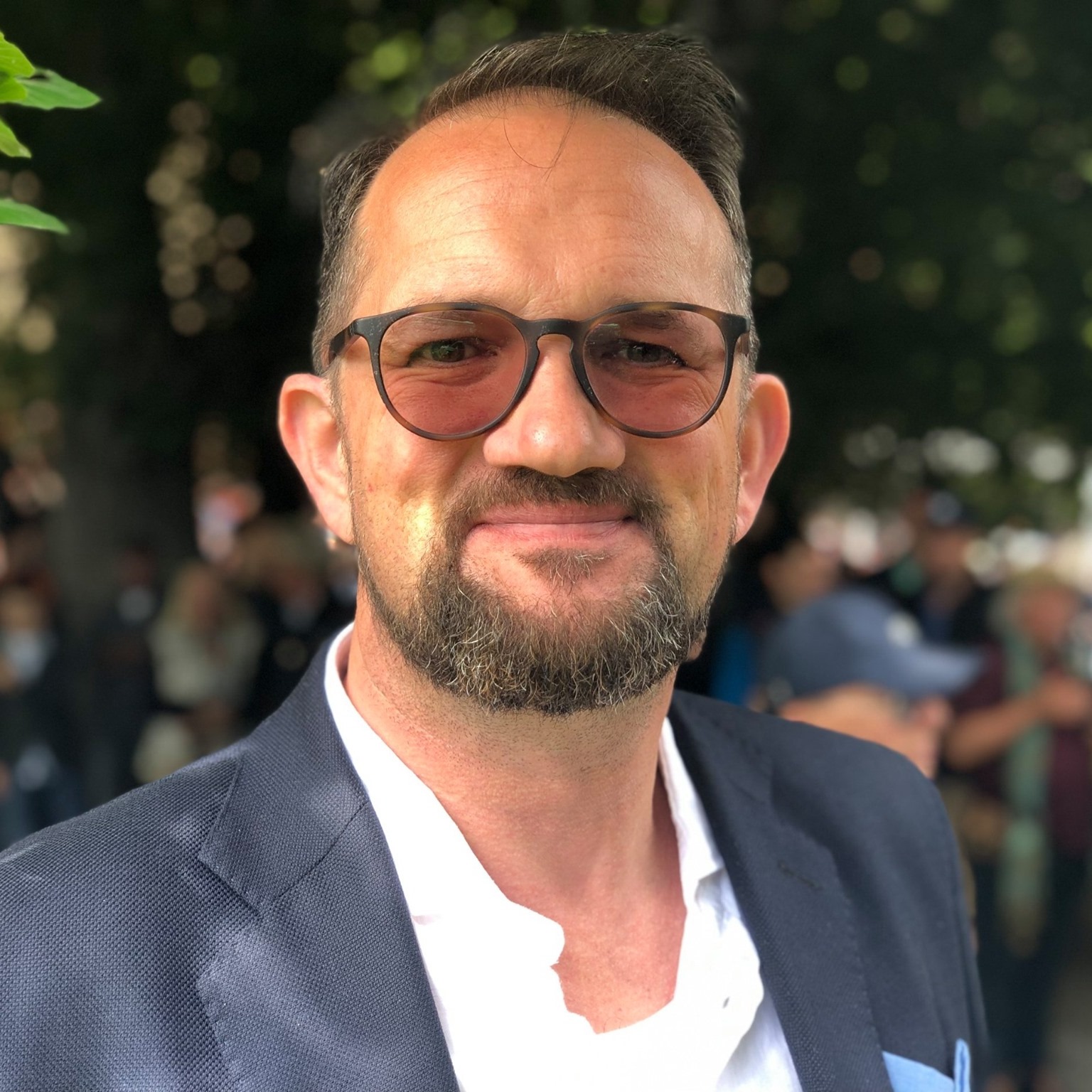
"For me, a person who knows Ukraine and many Ukrainian people, being safe at home and unable to help is emotionally challenging—more difficult than assisting at the border. For me, this is the only way to understand what is happening. I was helpful there.
The faces of some of the women and children I met were constantly in my memory, and I kept thinking: what else could I do?" Andy says.
Now Andy helps Ukrainian families in Estonia. In Tallinn, he takes care of a center with about 500 refugees. Since May, he has also worked in the business education and mentoring program, which supports Ukrainian businesses in the production and implementation of services.
"I still admire the resilience of my friends and acquaintances from Ukraine, who weren't ready to accept that the war would prevent them or their businesses from growing and developing. They were determined to complete their courses to put their knowledge into practice."
Looking for a job, Anastasia called Andy. He told her about the large flow of women who also needed jobs and offered to create them together. The idea was for Ukrainian women to knit warm items, and the project organizers would sell them abroad. This concept seemed an obvious way to help women who were then out of work.
Andy and Anastasia agreed on the idea and started implementing the project almost immediately. They decided to knit.
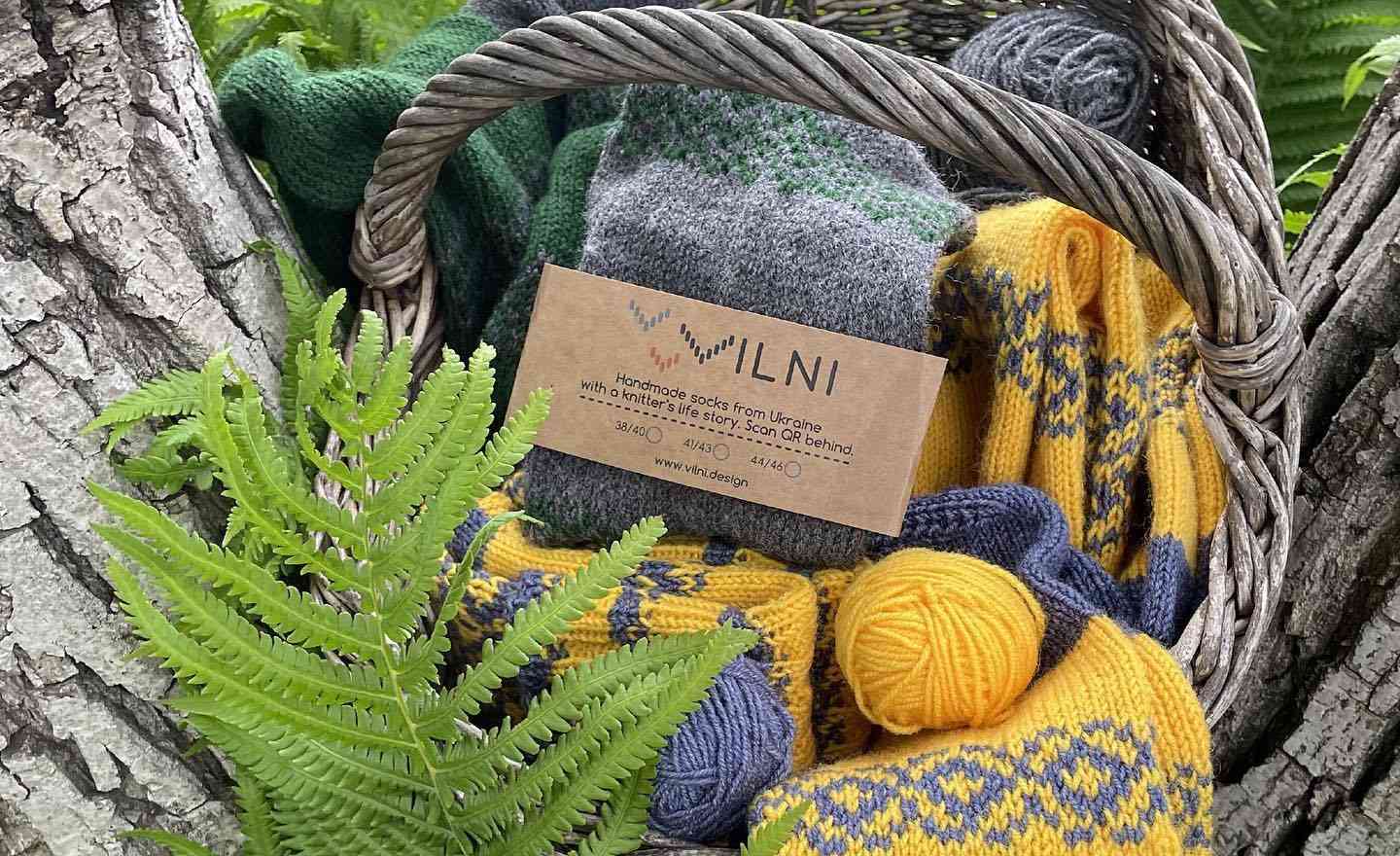
How does it work?
"For and about women"
Natalia, Anastasia's mother, made the first sock sample. She was one of the first to learn about the project and later began coordinating the production.
"It all started with Nastia's phrase: 'Mom, I found you a job. You will knit socks.' I agreed and went to buy yarn. I developed a model and sent a photo to Andy for approval," says Natalia.

Three people started the project: Anastasia, Natalia, and Viktoria, another coordinator from Kyiv. Anastasia was engaged in business processes and building a project plan. They immediately started looking for a person who would help with social media and a technologist who would develop a dimensional grid. Two more girls joined the team quite quickly: Maryna, who works with SMM, and Yulia, who works in the digital direction. They also found a craftswoman almost immediately.
Volunteers and knitters were sought through Google forms, where they were asked about themselves and their knitting experience. The team was looking for those who understand the mechanics of knitting and don't work to order. In just one week, they received more than a hundred applications. After the selection, Natalia contacted the women and asked about their skills and motivation. So they selected about 15 craftswomen and started production.
Online coordination made it possible to avoid being tied to the area. Initially, the project started with two centers. Now women from Donetsk, Kharkiv, Rivne, Uzhhorod, and Kyiv work in Vilni. There are three knitters from Estonia who have their coordinator on site. All craftswomen are from 23 to 83 years old.
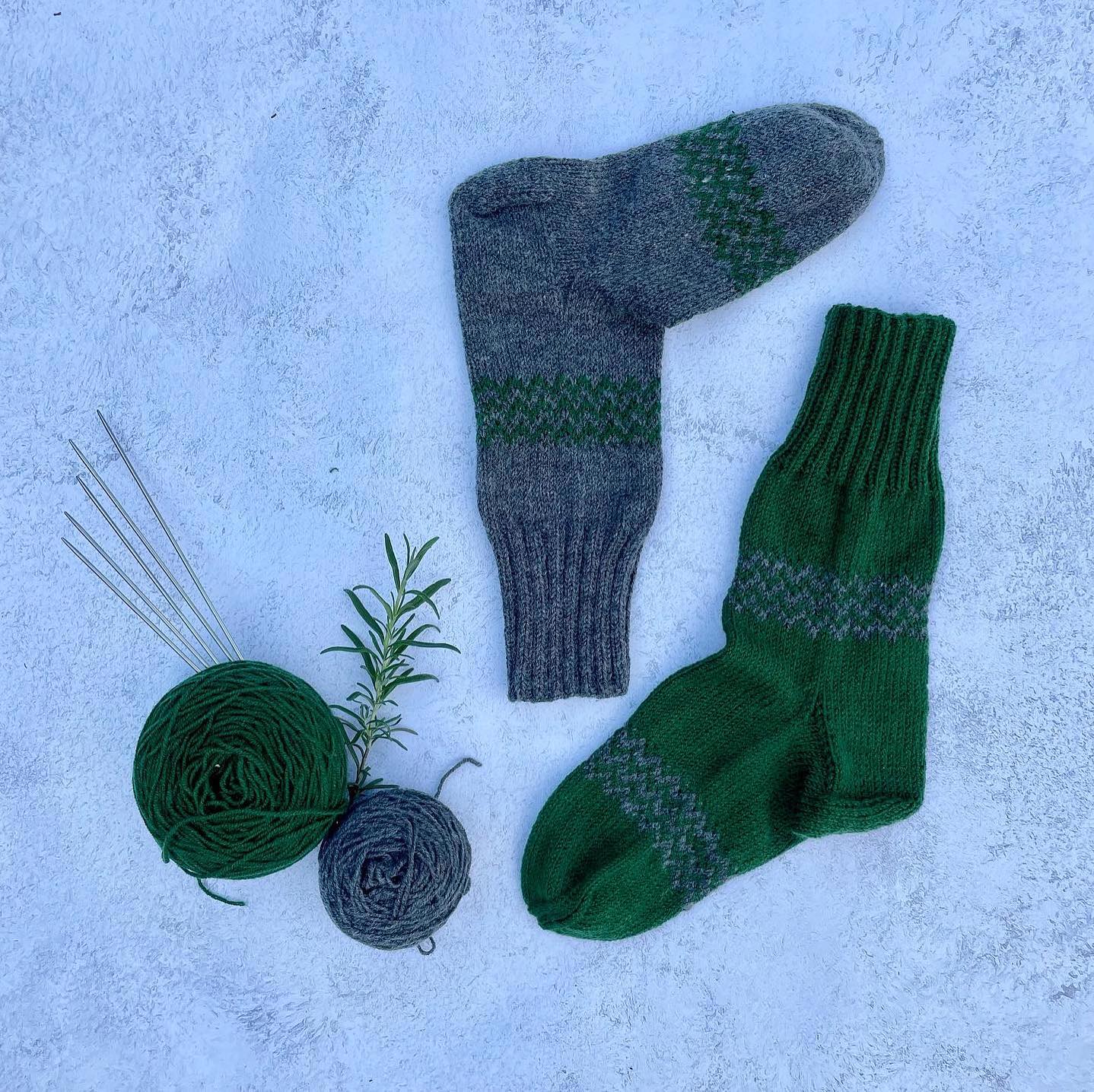
"Initially, the focus was on IDP women in Uzhhorod and Kyiv. It seemed easier to communicate with the coordinators. However, we realized this is impossible in the conditions of constant relocation. Now the geography of production is more than six regions," says Anastasia.
In a month, women must knit the required number of socks to order—some women knit five socks during this time, and some manage 25.
The process itself is structured as follows: first, yarn is ordered in Turkey for the appropriate number of socks, then the received threads, together with tools and an official contract, are sent to the craftswomen. The first two weeks are constant contact with women and explaining the technique to newcomers. Then the finished socks are sent to the coordinators, who iron them, check for compliance with the technical task and sew labels with the logo. Only then are they packed in craft boxes and sent to Anastasia. She studies the work once more and sends the socks to Estonia. This is how one work cycle passes.
"It is difficult to explain all the nuances of work from a distance. I filmed video lessons on knitting. They were given to the craftswomen, and I controlled the process in the first two weeks. Step by step, I asked them to send photos of the work with a centimeter tape. This was done so that everything corresponded to the dimensions and technical tasks. There are specific parameters for a certain size.
During the knitting cycle, the women support each other. They communicate, exchange recipes, etc. There is a feeling that we have been working with them for many years. Events in the country, work, and support unite us. Sometimes I was a psychologist. We are all connected emotionally, and this case tied us even more," Natalia shares.

In the last production cycle, they work on hats and scarves. Products are in national colors. They also have a pattern of mountains on the socks. The team also developed three New Year's designs.
"If we remember the first weeks of the war, it's complete panic. Our first month of work is a month of testing and understanding how everything should be. Now everyone knows who should do what. People have recovered and understand that everyone must do what they can for the war to end as soon as possible. So, we help ourselves and others," says Natalia.
The goal of Vilni is not to develop the brand but to talk about the people who do the work. Therefore, each product includes a QR code with the story of the craftswoman who created it.
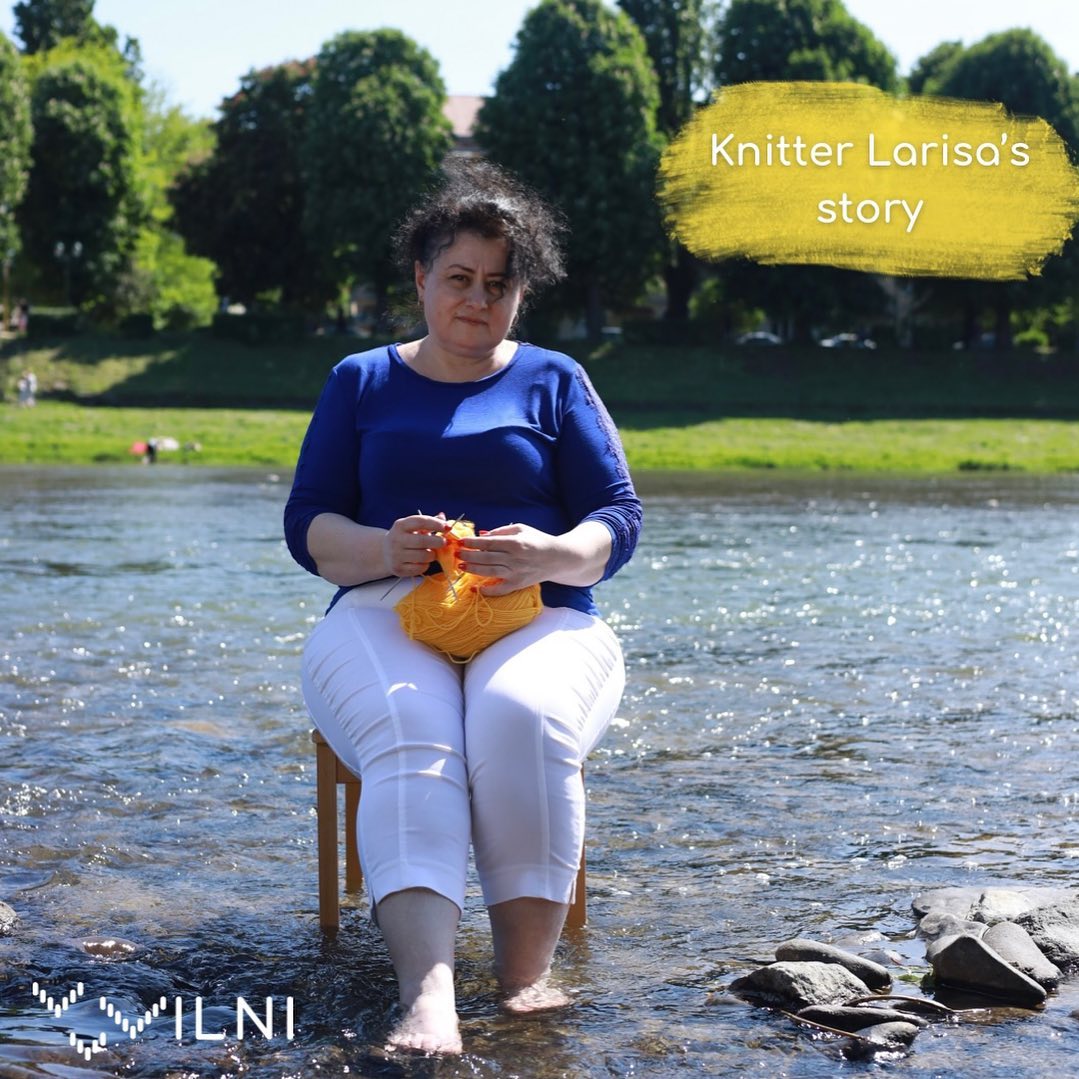
"We created this project for and about women. The main focus is on the craftswomen who knit socks and whom we provide with work.
The stories we publish become an opportunity for women to knit for someone who learns about them. It gives a feeling of greater involvement," says Anastasia.
Does it work?
Forming community
At first, most of the products were bought by acquaintances—colleagues from Italy and Germany. Subsequently, the project began to develop, and new clients came to the workshops.
"The first order was from Italy. Now we will work on two corporate orders from Estonia for a company that wants to buy socks for its customers for the New Year holidays and for a charitable foundation that plans to donate these items to the Maria Theresa Foundation. This is how they support our project and, at the same time, help the foundation," explains Anastasia.
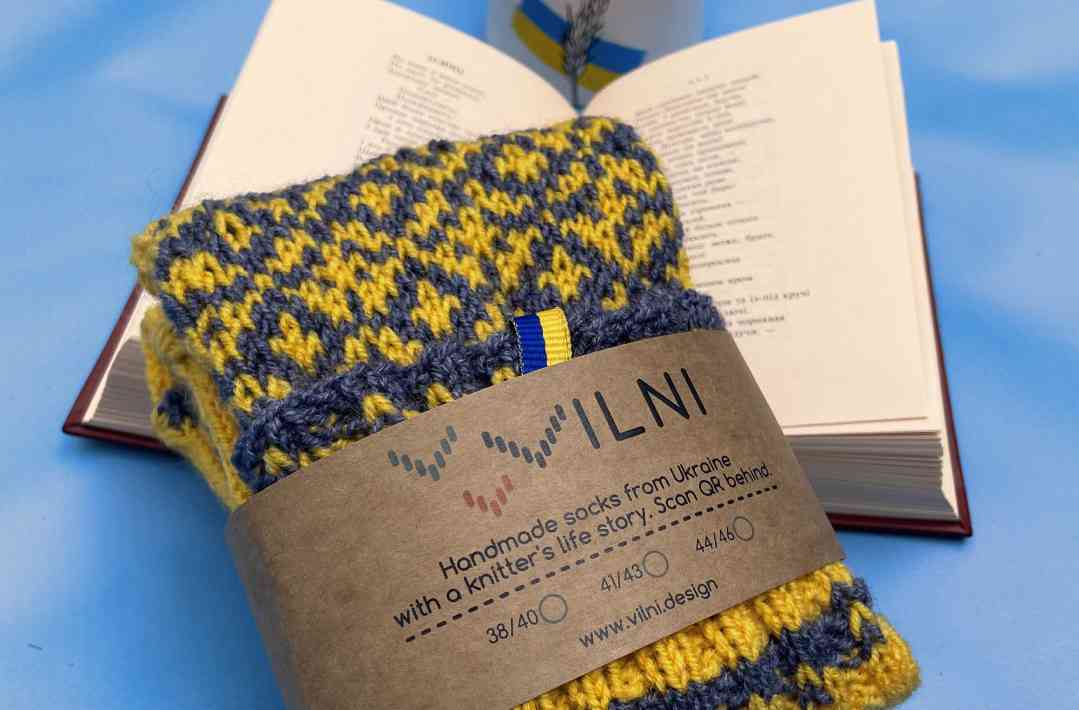
Now there are 25 volunteers on the team. These are lawyers, SMM, a designer, a copywriter, and other women who lead the community. They work for free. Only coordinators and craftswomen receive a salary.
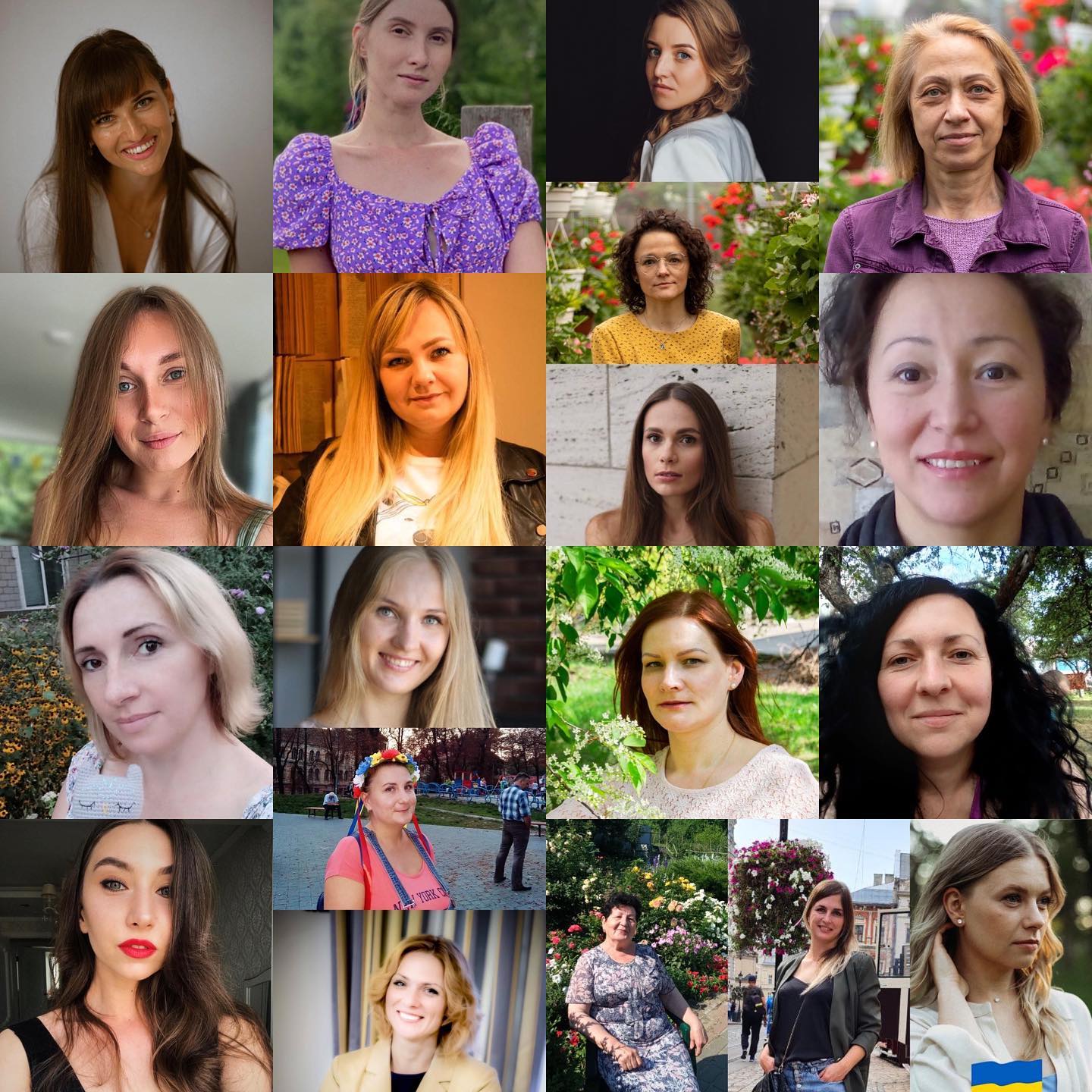
"Forming a team is a challenge. And creating the volunteering team is a double challenge. People have completely different motivations to stay in the project. Mostly, it is to help women. Volunteers are often IDPs themselves, so they are motivated to help those like them. For example, Yulia, who is engaged in SMM, allocates several hours daily to work on the project. She invests so that this machine works and can give as many women as possible the opportunity to earn a living.
Additional motivation comes from messages from craftswomen who say they feel like part of something bigger. They say that when their city is being bombed, knitting helps to distract them.
The result is also motivating. The first sale was a celebration. This also sustains us," says Anastasia.
Every month, Anastasia summarizes the project's work and describes everything to the team. For example, the last batch was 400 units when they started with 90. And on social media, about 300 people joined the community of the initiative.
In addition to production, the project also develops the VilniWomenCommunity. It was created primarily for those who needed help attracting knitters on a paid basis. There are about 80 people on this list, and it is constantly being updated. Three women volunteer in the community to provide information, and connect women to a psychologist for an individual consultation or support group.
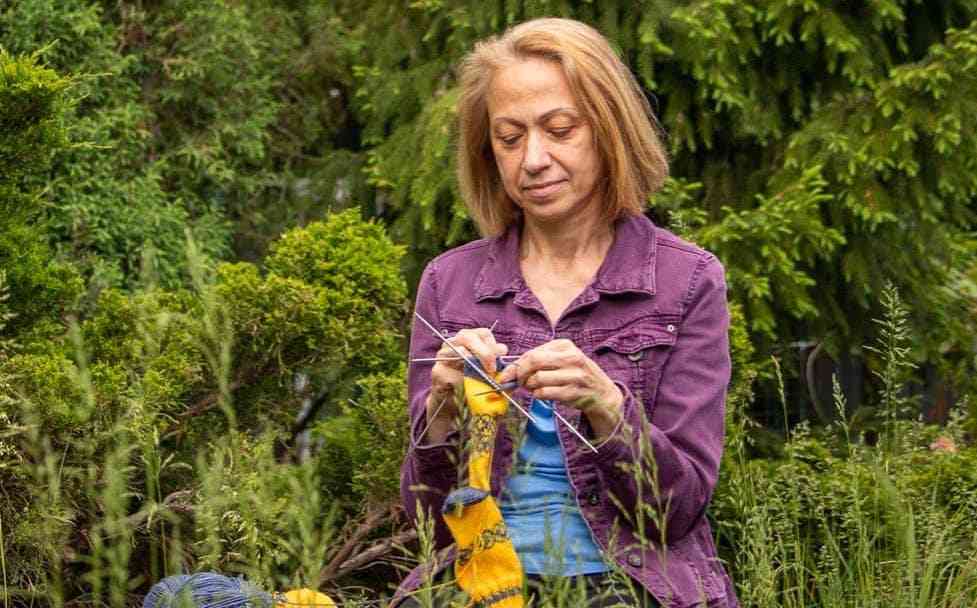
"Periodically, the community holds meetings with entrepreneurs and other experts who provide the necessary skills for self-start. They also practiced yoga classes and conducted English courses. We've created a safe online space where you can feel supported by other women and relax. All classes given by speakers are free for women," Anastasia explains.
You can join the Vilni Women's Community through the Telegram channel.
How to help?
The organization did not build the socks' pricing according to business rules; the social aspect prevailed to form at least a minimum wage for women. If the craftswoman works full-time, she receives 10,000 hryvnias.
The price of socks for sale abroad starts from 32 euros. They recently opened an online store in Ukraine where you can buy socks for 1025 hryvnias, hats for 877 hryvnias, and scarves for 920.
Andy attracts investments in the Vilni project. He negotiates assistance with companies and potential patrons. Anastasia and her team won a grant in Ukraine that helps development. However, for now, they only manage with their own funds.
"We do not aim at a profit. We cannot yet invest the proceeds from sales. More than 60% of profit goes to wages. In addition to this, there are also labels, yarn, and logistics within the country and abroad.
At first, we aimed to provide 100 women with work and pay for the team. The team includes displaced people who should be project recipients but now have the strength to donate their time. In three years, we want to reach 500 women. If everything goes well, we will develop as a production company after the victory," says Anastasia.


